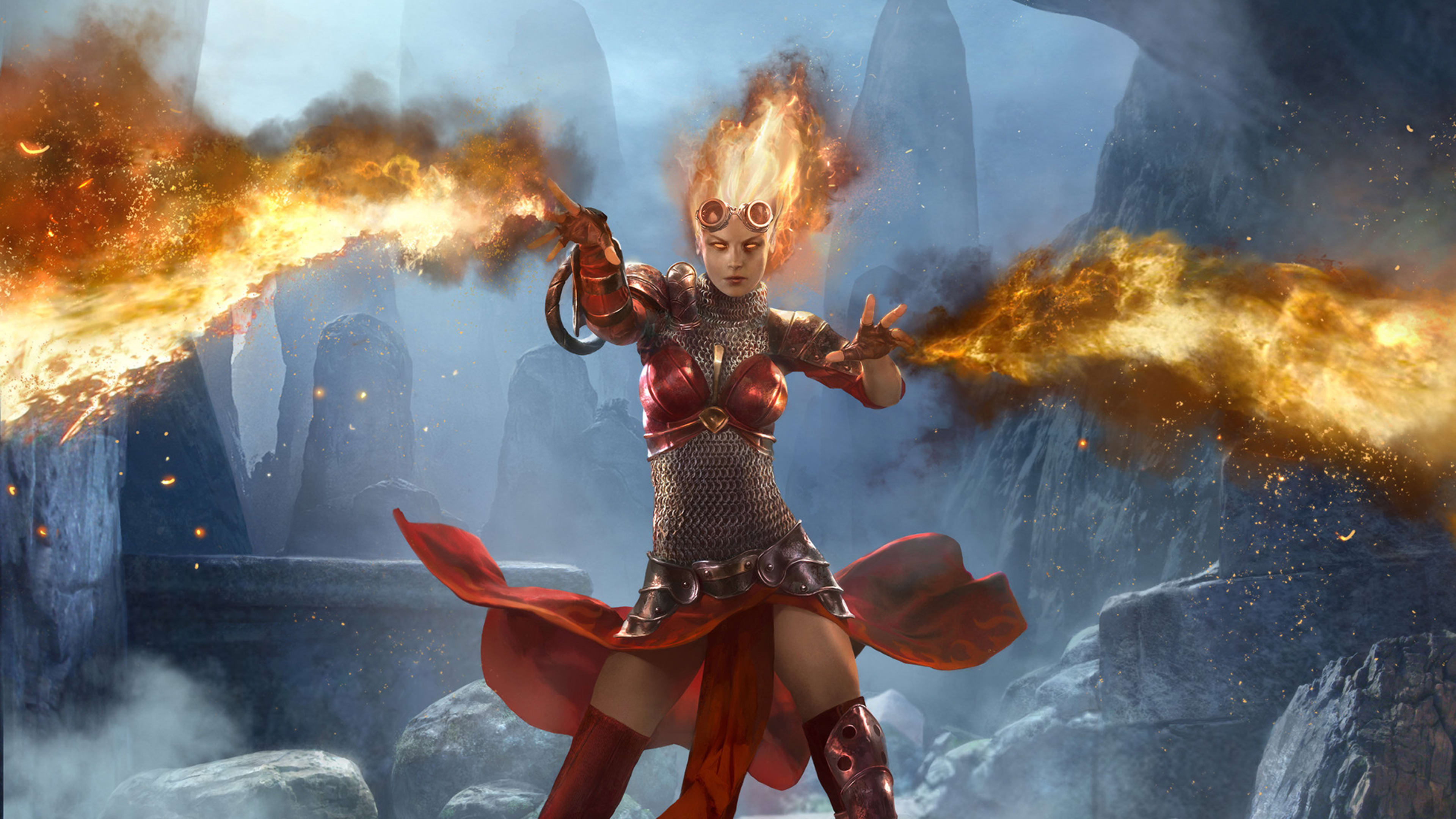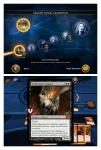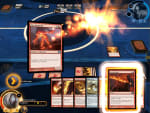Two wizards face off on a battlefield, summoning monsters, casting spells, wielding artifacts. The action isn’t on a screen; it’s mostly in the players’ minds. They try to outwit each other by tossing down cards that signify combinations of powers and strategies. And in most cases, nary an iPad, laptop, or mobile touchscreen is in sight.
For 20 years players of Magic: The Gathering have been collecting cards, building decks, and facing off in real time, person-to-person. Today, the game features almost 14,000 different cards. Every August, a new set hits shelves–Magic 2013 or Magic 2014, for example. Then a block of three related expansion sets follow–Theros launched in September; Born of the Gods is slated to come out in February 2014; and Journey Into Nyx is the set scheduled to complete the Greek mythology-themed block in May.
“One of the great things about Magic and one of the reasons it has endured for the last 20 years is its ability to evolve,” says Magic brand director Mark Purvis. “Every year, we present a new world to players. That’s one of the things that keeps the current game itself fresh.”
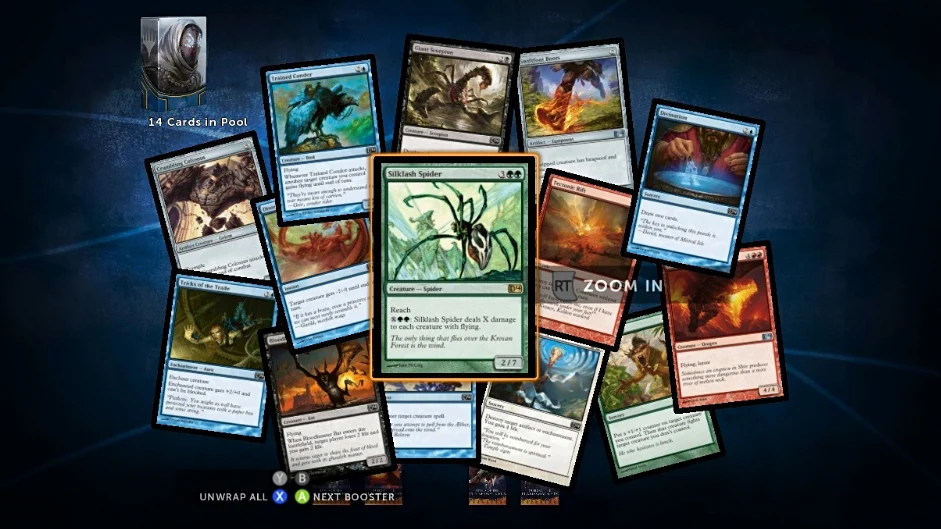
In the age of rapidly developing graphics, mobile screens, and ever-shrinking, low-cost technology built for digital gaming, Magic has built its business on a physical foundation. New card sets sell at $15 for a starter deck of 60 cards, with booster packs of 15 cards of varying rarity for $4. Publisher Wizards of the Coast said in February that the annual revenue from Magic nearly tripled in the last four years. This year, there’s been double-digit growth, and revenue will likely hit $300 million. Even as competitors launch digital versions of fantasy or role-playing games that feel inspired by Magic‘s card-based play, Wizards estimates they have 12 million players dueling in homes and hobby stores worldwide, using cards printed in 11 different languages.
House Of Cards
Magic does dabble in digital. But it all comes back to cards. In 2002 the company launched Magic Online, a computer game where players meet online and play each other in matches or full tournaments. They spent real money for virtual cards–it’s a common revenue source for online games today, but it was brand new in ’02, Purvis says. “Magic Online has become one of the very first games to rely on that as a business model,” he says.
A few years ago the makers of Magic spun off a video game called Duels of the Planeswalkers, a more graphical and flashy facsimile of the card game, for play on tablets and home consoles. It has a more focused experience, with a limited selection of decks and cards. There have been a few annual updates of that virtual version of Magic, but mostly the virtual versions are designed to aid the physical game–by teaching the rules to players, for one. With 20 years and 14,000 cards, Magic is not that simple. “It is a challenge for us because of the high barrier of entry due to the complexity of the game. Duels of the Planeswalkers allows people to get a foundation for the game without being overwhelmed,” Purvis says. “And they can even do that on their own against an AI. If they do make mistakes, they are doing it in the privacy of their own home and not having to worry about what their friends think.” By the time they meet in person, they’re often well acquainted with the world.
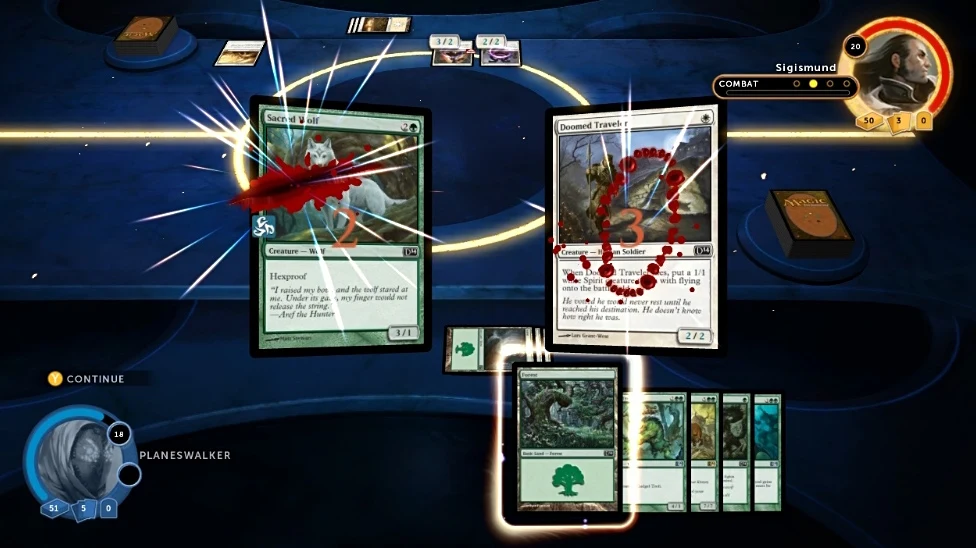
In other words, the digital games aren’t there to replace the physical game. “When we first launched Duels of the Planeswalkers there was a lot of nervousness among the retail community that we would be stealing players out of their stores and putting them in front of computer screens,” Purvis says. “But it has really been our strategy all along to use the digital medium as a way to reach gamers and educate them about Magic, teach them how to play, and then make them aware of what kind of communities are in their local game store.”
For Magic, community is a big deal–from the thousands of stores that sell the cards and offer spaces to play in, to the tournaments held worldwide. “We use these games to drive players into stores. With Duels, there is a code in the game that you can take to your local hobby store, where they will give you a free promotional booster pack,” Purvis says. “And while in there, they have an opportunity to hear about what kind of things are going on in the store. Most of the stores that sell Magic also run tournaments on a weekly basis.”
Increasingly, Wizards of the Coast are leveraging events in stores to keep players engaged. “We are looking for opportunities to create an experience–sometimes it’s a product, sometimes it’s promotional material. We want to turn the tournament into more. We want the players to experience the story of the current card set, in a way they can only do at the store,” Purvis says. “At prelease events for Theros, players were invited to go on a hero’s path. Players experience the classic hero’s journey that you would expect from Greek mythology, through a series of events taking place in stores over the next nine months.”
Behind The Magic
“Magic has been always been an innovator,” Purvis says. “Twenty years ago there was no such thing as a trading card game, and Richard Garfield, the inventor of Magic, came up with this wonderful scaffolding of rules within which you can play this game. But then Magic now has a dozen different ways to play.”
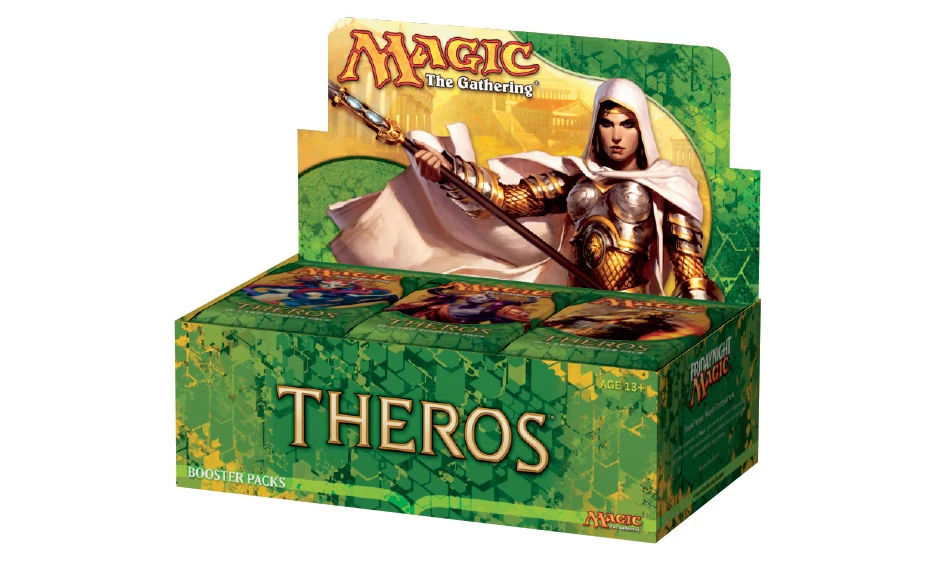
When Garfield created the game with publisher Wizards of the Coast, players would build decks of 40 or 60 cards from starter sets and booster packs, with more powerful cards being more rare. The game become popular almost immediately when it was released in 1993. In 1999, toy giant Hasbro purchased the company and largely left it and Magic alone.
Hundreds of new cards come out each year, writers and developers designing the cards years in advance, a hundred contracted artists providing the hundreds of fantasy paintings needed for a new release.
Aaron Forsythe, senior director of Magic‘s R&D says, “We start three years in advance of a set being released by discussing big-picture settings, themes, story beats, and mechanics. An advanced design team then spends six months cranking out gameplay ideas that fit in that broad framework, after which the set’s design team proper picks the best ideas, expounds upon them, and works with the creative team to make sure the worldbuilding and cards mesh well. From there it goes to the final design team, who has the incredibly difficult job of tying all the pieces together–rules, flavor, digital implementation, branded play activities, casual play, intro products–into one cohesive package.”
Virtual Reality
Plenty of others have touted digital versions of fantasy games that are easy to download and convenient to play, with groups of friends meeting online rather at someone’s house or a local store. Card and board games such as Settlers of Catan, Ticket to Ride, and Pandemic have all made the jump to digital and mobile versions. Richard Garfield, who devised Magic‘s rules, worked on the recently released virtual card game Card Hunter. And Blizzard, the video game behemoth behind the hugely successful World of Warcraft online RPG, recently launched a beta prototype of their own virtual card game, Hearthstone.
“Blizzard has been a company that has been very excited about collectible card games,” says Jason Chayes, production director of Hearthstone. “Because there was all of that passion there … we wanted a team that was capable of being a little bit more opportunistic, a little bit more scrappy, maybe a little bit more experimental. That’s where the idea for Hearthstone began.”
Hearthstone lead designer Eric Dodds says the company set out to create a digital game from the get-go but found out pretty quickly that virtual cards were still the easiest way to encourage play. “We settled on (virtual) cards because everybody knows how cards work,” Dodds says. “You know how shuffling works and how a hand of cards works. It served our goal of letting everyone jump right in and play in five minutes.”
The resulting game feels similar to, if not younger and a bit quieter than, Magic: The Gathering. “We played a bunch of different games–Magic is certainly one,” Dodds says. But Hearthstone‘s digital cards have less text and smaller decks, and turns are quick-paced so that the average game of Hearthstone takes about 10 minutes.
Companies have tried making online games more social, with in-game text messaging, voice chat, even video feeds. Blizzard has been updating Hearthstone to improve chatting between players or adding social features such as Toasts, where those on your friend list are alerted when you accomplish big achievements in the game, like winning rare cards. “A patch we put out was our first step to improving the social experience in Hearthstone,” Chayes says. “I think it’s very important. That connection to your friends when you play these games is something we do want to maintain. For that reason, we have a friendly play mode where you can play with your Battletag and Real ID friends; you have the ability to emote with your opponents; you can have an exchange back and forth with them when you are playing. We are going to be looking for ways to keep dialing it up in the future.”
One way to look at all this, of course, is to say that the digital experience is trying to mirror the best, most social qualities that come naturally with real-world play. But none of it quite lives up to face-to-face gaming, Purvis says. “Whenever I go to a digital gaming convention, most recently PAX Prime, we offer face-to-face tournaments. We had hundreds of people playing Magic over the course of the weekend. I think it’s just human nature to want that personal interaction, that face-to-face interaction, especially getting together with your friends.”
The social experience of Magic, the complex rules, and the addictive quality of collecting rare cards and building complex decks creates diehard fans. And some of these fans who have been playing for most of the 20 years of the game’s life now work on it. Both Forsythe and Purvis played Magic in its early years and have a deep connection to the game, which may prevent any radical tranformations of the game from a physical focus to a digital one.
“I have often wished I had a crystal ball and could predict what the game industry would look like 20 years from now,” Purvis says. “In the near future, we are definitely focused on continuing to support our retail community. It’s in those stores that players are having these entertainment experiences. And that’s definitely going to involve physical cards.”
Recognize your brand’s excellence by applying to this year’s Brands That Matter Awards before the early-rate deadline, May 3.
